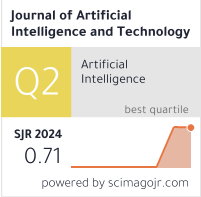Deep Learning for Automatic Diagnosis of Skin Cancer Using Dermoscopic Images
DOI:
https://doi.org/10.37965/jait.2024.0392Keywords:
deep learning, dermoscopic images, skin cancerAbstract
Over the past few years, the healthcare industry has seen a dramatic increase in the use of intelligent automation enabled by artificial intelligence technology. These developments are made to better the standard of medical decision-making and the standard of treatment given to patients. Fuzzy boundaries, shifting sizes, and aberrations like hair or ruler lines all provide difficulties for automatic detection of skin lesions in dermoscopic images, slowing down the otherwise efficient process of diagnosing skin cancer. However, these difficulties may be conquered by employing image processing software. To address these issues, the authors of this paper provide a novel intelligent multilevel thresholding with deep learning (IMLT-DL) model for intelligent dermoscopic image processing. Multilevel thresholding and DL are brought together in this model. Top hat filtering and inpainting have been included into IMLT-DL for use in image processing. In addition, mayfly optimization has been used in tandem with multilayer Kapur’s thresholding to identify specific trouble spots. For further investigation, it uses an Inception v3-based feature extractor, and for data classification, it makes use of gradient boosting trees (GBTs). On the International Skin Imaging Collaboration (ISIC) dataset, this model was shown to outperform state-of-the-art alternatives by a margin of 0.992% over the duration of trial iterations. These advances are a major step forward in the quest for faster and more accurate skin lesion detection.
Published
How to Cite
Issue
Section
License
Copyright (c) 2024 Authors

This work is licensed under a Creative Commons Attribution 4.0 International License.





